Small group reading instruction in 4th and 5th grade can be daunting. You may have a class of readers with huge ranges. Some of your students may be struggling to read multi-syllabic words and then other students may be reading novels on grade level and beyond. This blog post will go over some different types of small groups that you can have in your classroom. Then I’ll share a six-step process that works with any focus or type of small group instruction you may have.

What to Teach in Small Group Reading
First, let’s briefly discuss what you can teach in small group (or what your focus could be for small group instruction). The focus will largely depend on the needs of your students and your curriculum. It may also change frequently or vary from group to group.
Here are the main focuses most teachers will have for small group instruction in 4th and 5th grade:
- Comprehension
- Skills and Standards
- Decoding and Phonics
- Morphology
- Vocabulary
Let’s look at each one of those small group focuses a little closer.
1. Comprehension – This would be if you have a group of students who are able to read multi-syllabic words and read fluently, but they struggle with comprehension. When they finish a passage or even a paragraph, they can’t remember what they read and can’t answer even simple questions about the story. Your focus for this group will be building their language comprehension and teaching them strategies to engage with the text to build mental models while they are reading.
2. Skills or Standards – Another focus you could have for small group instruction could be specific skills or standards. This could be the current skills and standards that you’re teaching, such as theme, main idea, and text structure. It could also be embedded skills or review skills that your students need to be able to master the grade level skills. This could (and most likely will) go right along with your whole group instruction.
3. Decoding or Phonics – Your focus could also be on decoding and phonics. If you have students who struggle with simple word recognition or have difficulty reading two syllable words, your focus might be on phonics skills or syllable types.
4. Morphology – You may have students who are struggling with word recognition beyond two-syllable words, but they have the basic phonics down. They just need help transferring that to multi-syllabic words and working with longer words. Morphology is a great focus for those students. It’s going to help their word recognition skills, but it’s also going to help their vocabulary skills.
5. Vocabulary – The final small group instructional focus that you may have specifically focusing on vocabulary. I typically don’t teach vocabulary as a separate focus for my small group because it is embedded in all of my small groups, which you will see in my 6-step process in the next section. However, this is definitely something that you can focus on primarily if this is a need with your students.
How To Do It: Six Steps to Small Group Reading Instruction
Now let’s look at the six steps for small group instruction, and then we’ll take a look at how these steps could look no matter what your focus is.
Step 1: Teach or review the focus skill or strategy.
Step 2: Introduce the text.
Step 3: Introduce or frontload vocabulary.
Step 4: Set a purpose for reading that ties back to the focus skill from Step 1.
Step 5: Active reading and monitoring.
Step 6: Discuss and extend the learning.
Let’s look at each step more closely.
Step 1: Teach or review the focus skill or strategy.
To begin your small group reading lesson, you want to explicitly teach or review the skill and share the objective with your students.
If you are reviewing, you would take a few moments to review the skill. If you are teaching something new in small group, then you would take a little more time to explicitly teach the skill. This could be a phonic skill, a specific morpheme (prefix, suffix, or root), a comprehension strategy, or a reading skill. Whatever you are teaching will depend on your focus.
Step 2: Introduce the text.
For the next step, you will introduce the story or text that the students are reading. This will help activate students’ prior knowledge and also build background knowledge because you’ll be sharing details about the text. This also helps make the text accessible to your students.
I also use this step to build any specific knowledge that may be needed. For example, if we are reading a story set on a subway, and my students are not at all familiar with the subway because they live in the country, I may show some pictures of a subway or a quick video of a subway ride. I may also just have a discussion about what a subway is and quickly build that necessary knowledge that the students may need to be able to comprehend that text.
Don’t overthink this step. It can really be as simple as saying: We are about to read a story about a boy named Jacob who has a big problem that he has to deal with.
Step 3: Introduce or frontload vocabulary.
Next, you will introduce and front load important vocabulary. The vocabulary that I choose is vocabulary that cannot be defined in the text, so there are no strong context clues that will help students define that vocabulary. This is important because you don’t want to take away the student’s opportunity to use context to determine the meaning of words. However, I do point this out after reading to ensure they used their context clues (and if not, to model and reinforce it).
I also choose the vocabulary that is most important for the students’ comprehension of the text. To do this, I’ll just quickly read over the assigned reading for that group’s lesson and look specifically for words that are important to understanding the story.
Frontloading key vocabulary also helps with building that background knowledge because you are building the knowledge of the words that the students need.
Note: This is what I what I mean in the first section where I state that I don’t have vocabulary as a separate focus. It’s embedded in all my small group, no matter the focus.
Step 4: Set a purpose for reading that ties back to the focus skill.
For this step, you will set a purpose or focus for the students’ reading that connects back to step 1 (the skill you taught or reviewed). This can be a specific focus or “task” while they are reading and/or immediately after they have finished reading. This will vary depending on the focus lesson and should tie directly back to what you taught in step 1.
Example Focuses
- When you read today’s story, I want you to focus in on what challenge the character has and how the character reacts to it. Think about what that can teach us about life. This will help you uncover the theme of the story.
- When you read the text, look for words that use the target prefixes. Think about how the meaning of the word connects back to the meaning of the prefix.
- As you are reading, look for actions and dialogue that show the main characters’ traits. When you are finished, jot down the main trait shown by the character and your evidence.
Step 5: Active reading and monitoring
Now, you will have the students actively read the text. Giving them the purpose in Step 4 will help students read more actively. However, they can also be doing some writing connected to that purpose. You could have them jot down notes in a notebook as they read. You could also put post-it notes on specific sections of a longer book or even a passage that requires them to stop and jot down notes about the text as they’re reading it.
Note: Writing during reading is not recommended for students who are working on fluency or word recognition as you want their focus to stay on reading the text. This is a great strategy for students who read and decode fluently but struggle to make a mental model of the text.
While the students are reading, this is your time to lean in, listen to your students read, and discuss the text with them. During this time, you are also checking their comprehension, looking for any word recognition issues they have, and noting any teaching points that you need to address at the end of the lesson or for another lesson.
One way that I have done this is to tap quietly on their text or the table as a signal to let them know that I want them to whisper read to me. They whisper read right where they have left off. While they are reading, I am monitoring their decoding strategies and any difficulties they may be having with fluency. Then I’ll have them stop, and I will ask a focus question. It may be related to the skill, or it may just be, “Tell me about what you read. Tell me what you’re thinking about this.” Just something to get the students to tell me about what they have read to help me monitor their comprehension.
Another option is that you can actually read the text with the students, having them follow along with their own copy. You can stop at specific points for discussion while you are reading.
Step 6: Discuss and extend the learning.
After the students have read the text, you are ready to discuss and also extend, if you wish.
The discussion is one of the most important steps. This is when you want to discuss the text and the focus. I like to begin with just a general and natural discussion of the story (which is usually brief due to time but is important because that’s what real readers do – they discuss books in a natural way).
Then I move the discussion back to the focus and the skill that was introduced in step 1.
Tip: Partner your students up within the small group. Have them discuss important questions (the ones that tie back to the skill) with their partner and then come back together and discuss it as a group. This ensures that all the students are sharing and discussing the focus skill.
Finally, I extend the students’ learning (either with me on the same day, with me during another day, or independently). This extension can be an extension of the same skill, or it can be a review skill or a review activity. This could be writing about the text, filling out a graphic organizer about the text, or working with words that match the decoding or morphology focus.
Want Small Group Reading Lessons + Activities to Try Out?
To get the FREE ready-to-use small group reading lessons for grades 4-5, click here or on the GIF shown below. You will be redirected to a new page where you can enter your email for instant access to done-for-you small group reading lessons.
Need More Small Group Reading Resources and Ready-Made Lessons?
For skill-focused small group reading instruction, check out these resources:
Shop This Post
For word-recognition focused small group reading instruction (decoding or morphology), check out these resources:
Shop This Post
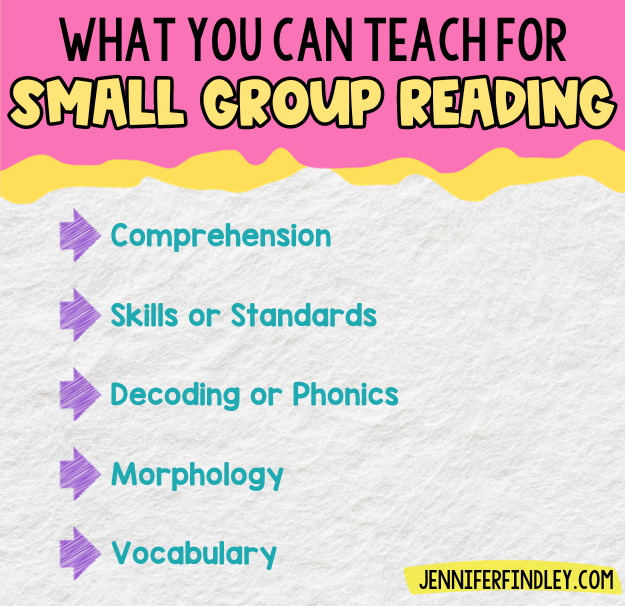
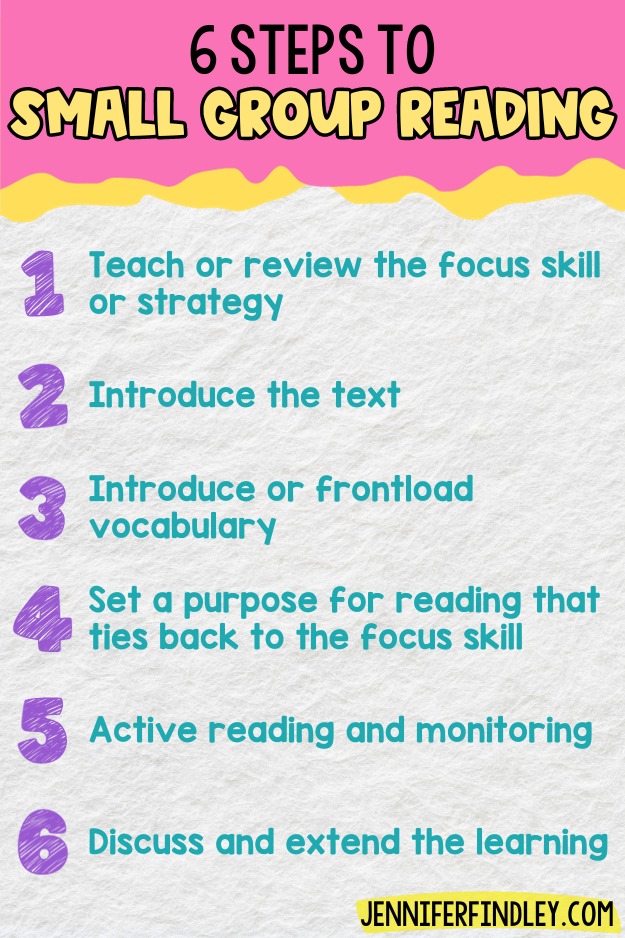
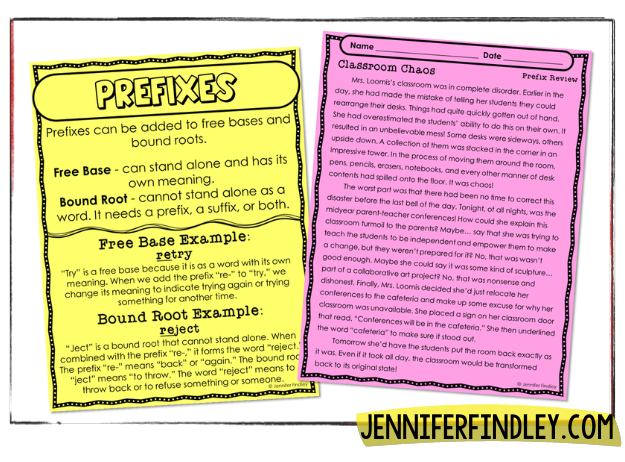
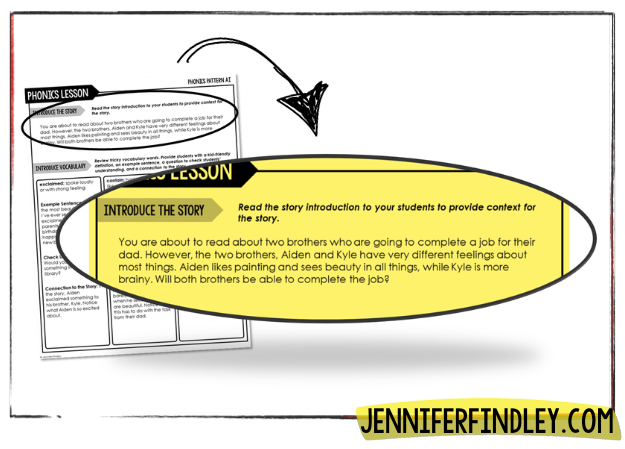
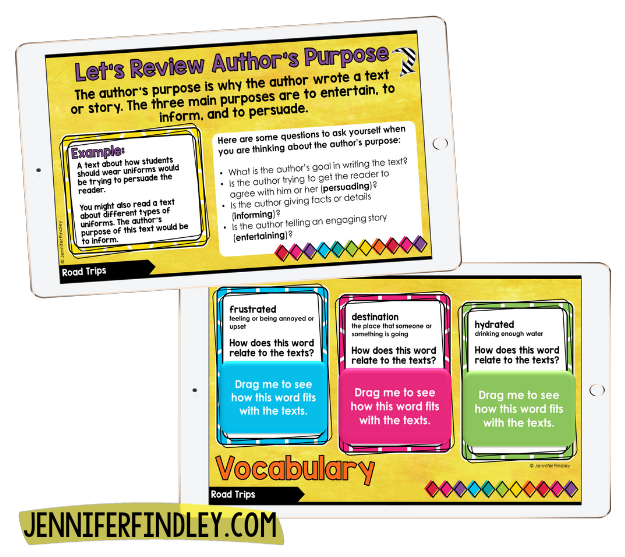
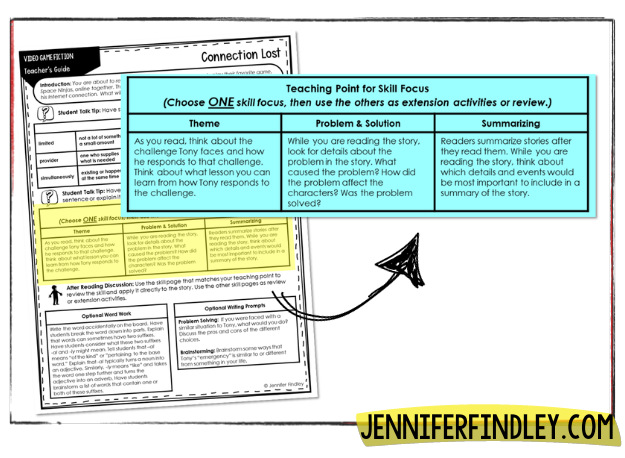

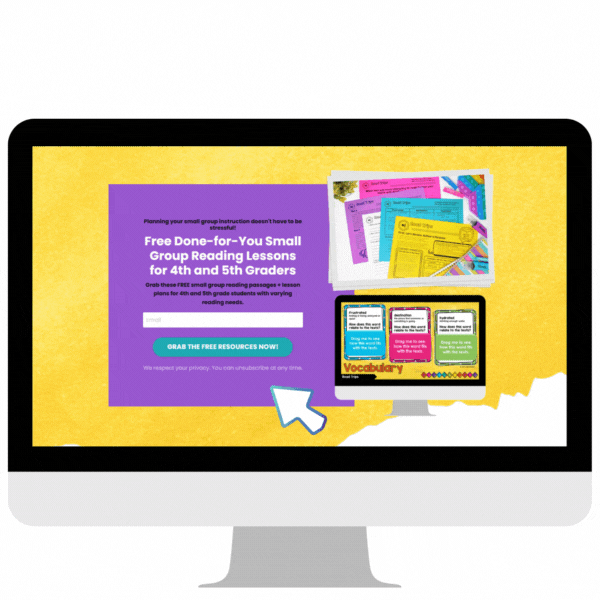
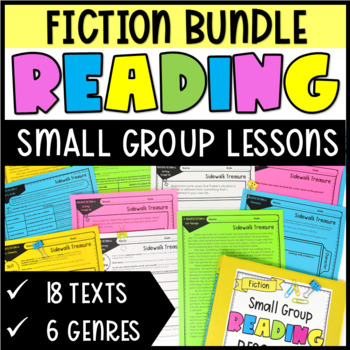
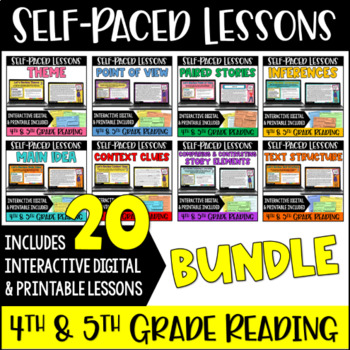









Thank you so much for sharing!
What are the other students doing in centers or rotations while you are you your small group?